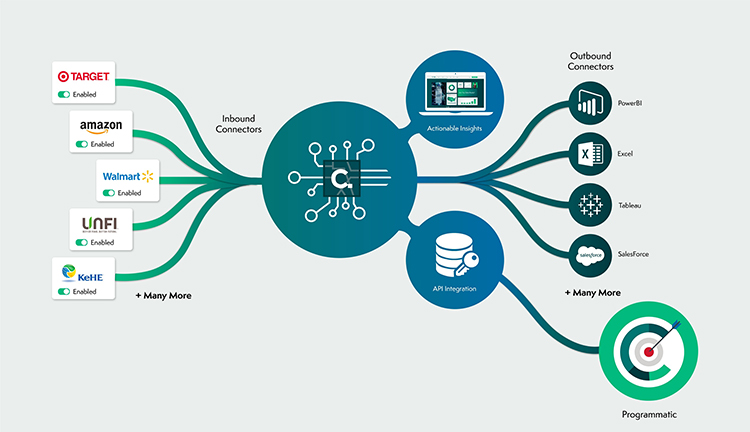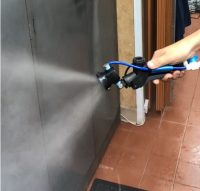The year 2020 brought with it continued court filings within the food safety litigation space, and it should come as no surprise the pandemic presented its own set of unique challenges. We’ve seen disruptions to the food and beverage supply chain, noteworthy changes with recalls, and continued developments in litigation specific to product labeling. These challenges have impacted everyone involved in the industry and laid the groundwork for what’s to come in 2021.
The most notable impact the food industry has faced as a result of the pandemic has been the massive disruption of the food supply chain. Grocers and other retail food providers have seen an immense spike in demand, whereas foodservice locations, such as restaurants, universities, and hotels, have seen the exact opposite. This disruption to the supply chain has required regulatory agencies to take notice and implement temporary policies to support these businesses and consumers alike. Employees across the food industry supply chain, including agriculture and food processing, have further been classified as essential, leading federal agencies to issue guidance to these employers to help them assess COVID-19 control plans and protect their employee’s health. Further, safety concerns and bumps in unemployment compensation have imposed additional strains on worker retention and attendance.
Another interesting facet of the pandemic’s impact on the industry has been its influence in the product recall space. Believe it or not, companies have strayed from pulling their products off the shelf even if it subjects them to potential liability. Why is this? Because as mentioned earlier, the demand for food in the retail space has increased so much, it has become a necessary choice to avoid food shortages across the United States. Don’t worry, if a product possesses a health or safety threat, companies are still recalling those to protect consumers and address safety concerns, but voluntary non-health or safety related recalls may have become a thing of the past. For example, rather than recall a box of cereal or other dry good for not meeting a fill-line requirement, providers may elect to risk a false-advertising lawsuit to meet the recent shift in retail food demand.
Since 2012, there have been more than 200 class action lawsuits filed related to the labeling on food products. This past year, we observed a continuation of this trend. Class action lawsuits were filed addressing the authenticity of “all-natural” products or claims based on the “origin” of a product, while we witnessed a sharp decline in slack-fill lawsuits. Consumers are becoming increasingly aware of the ingredients in food products and are continuing to demand transparency from companies to disclose how their products are made. There has been a particular increase in claims related to the definition of vanilla—is it pure? Is it natural? The same goes for citric acid, a product that can be made naturally or synthetically. There has been continued debate within the industry about citric acid in its use within other products where some citric acid is naturally occurring either from citrus fruit, tomatoes or other fruits with citric acid. If all-natural citric acid is added into tomato paste to help with the taste, can the tomato paste still be classified as being all-natural, even if the use of citric acid is displayed on the label?
To help combat the discrepancies around all-natural products, the USDA is currently working on developing an official definition of “all-natural,” which upon its completion is anticipated to have a major impact on the labeling industry and the number of false-advertising class actions. This definitional development comes at a crucial time especially as plant-based protein continues to rise in popularity.
The next wave of claims are being filed related to plant-based protein products. These claims include trademark and First Amendment issues. For example, when is a burger, a burger? Everyone assumes a burger means a hamburger, traditionally deriving from beef, and there has been an increase in debate around when the sale of plant-based products infringe on the rights of ranchers selling traditional beef products. Can food created in a petri-dish claim the same title as products created through traditional harvesting methods? What about other genetically modified products? These issues will likely spawn additional litigation in the coming year.
Looking ahead towards 2021, we can fully anticipate cases addressing food labeling issues to continue. Historically many of these claims were filed in Northern California with one federal court there earning the moniker of the “Food Court”. Recent years have seen increased filings in New York and Illinois, but the coming year may see a decrease in cases filed in New York as a result of recent court decisions relating to pre-emption and a recent opinion of a federal appellate court disallowing the settlement of class claims on an injunction-only basis. California may also see changes in their total cases as food producers curtail product sales in California to avoid the ambit of Prop 65.1
2021 will continue to bear witness to the effects of the COVID-19 pandemic. The supply chain will continue to adjust to the varying demands of the public as they navigate safety regulations, and companies will maintain an “only-recall-if-absolutely-necessary” mindset. Many of the adjustments that businesses, consumers and regulators have had to make in light of the pandemic may also lead to long-term or permanent shifts. In fact, the Consumer Brands Association has identified a few select areas ready for change, such as the maintenance of flexibility in food labeling to ease the transfer process of products between foodservice and food retail providers. We just might find 2021 to be one of the most industry-defining years in the food safety litigation space.
Reference
- California Office of Environmental Health Hazard Assessment. (n.d.). Proposition 65. Accessed December 17, 2020. Retrieved from https://oehha.ca.gov/proposition-65























